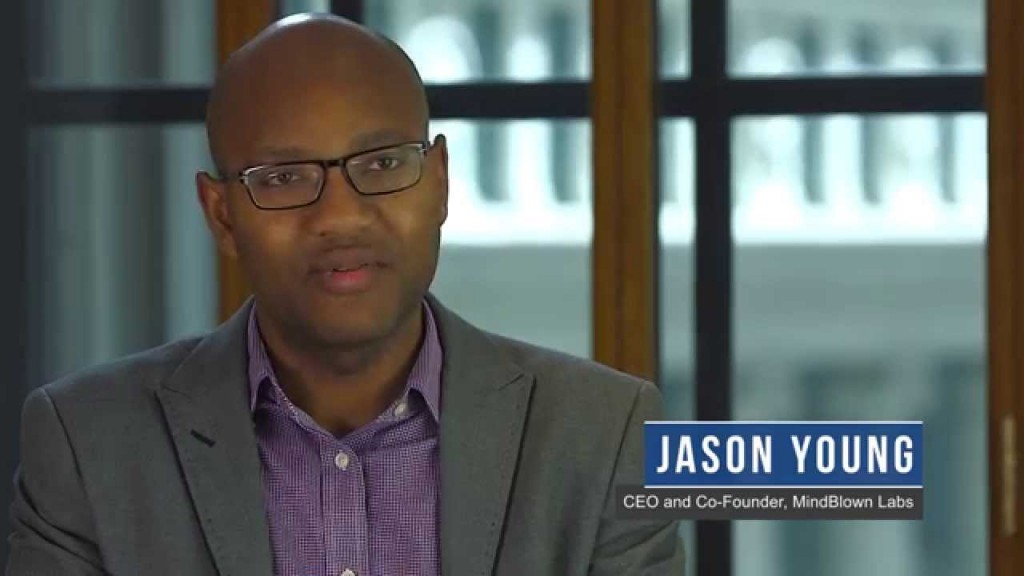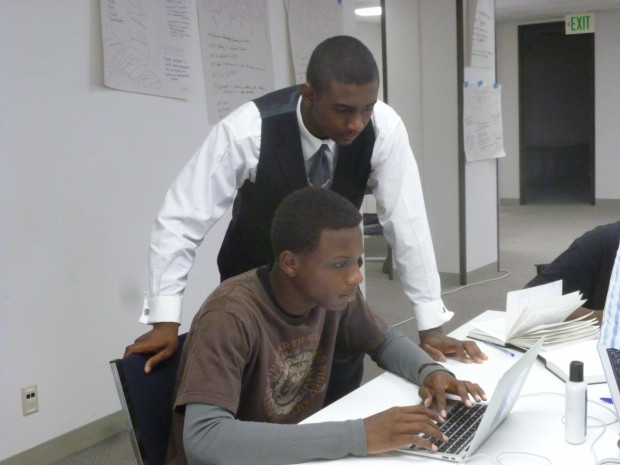
Good Morning POU!
Today’s feature involves efforts to curb the dismal number of minorities in Silicon Valley while simultaneously providing opportunities for young male teens of color in the Oakland community who otherwise, would not have one.
The Hidden Genius Project
More than a decade before diversity became a hot issue in Silicon Valley, Jason Young came home on winter break from Harvard to discover that his family was being evicted.
Having grown up in a single-parent home with an absent father who was frequently incarcerated, Mr. Young, 33, can identify with other young black men he now calls “hidden geniuses” — the promising male teenagers who grow up in challenging circumstances mere miles away, but light-years apart, from Silicon Valley’s tech money machine.
That experience led Mr. Young to found the Hidden Genius Project two years ago. The program immerses high school men of color in coding, web and app design, team building and other skills intended to give them a leg up in the tech economy. Mr. Young says he focused on young men because similar groups existed for young women, and because young males face particular challenges in school and their communities.
His project is one of a multitude of grass-roots efforts that have sprung up recently to address one of Silicon Valley’s most acute diversity problems: the scarcity of African-Americans in the tech industry.
“We are helping these young men to understand who they are and what they’re capable of,” said Mr. Young, who runs his education technology start-up, MindBlown Labs, in the same Oakland building as Hidden Genius Project. “We’re giving them a pathway and putting them on it.”
Young was struck by the imbalance in 2011 between the diverse Oakland community and the lack thereof in the tech industry. Young recognized how disenfranchised Oakland’s black community was from the rapidly growing opportunities tech has been bringing to the Bay.
“That didn’t make sense to me, especially considering that technology [as an industry] is more open than other traditional industries, namely in respect to minorities.” Like a number of locally-grown and fairly new nonprofits, such as Black Girls Code, Code 2040, Hack the Hood and Black Founders, Young sought to bridge the gap between the Bay Area’s most thriving industry and one of its most underrepresented demographics.
Young worked with fellow tech entrepreneur Kurt Collins, Kilimanjaro Robbs, Ty Moore and five others to launch The Hidden Genius Project, a STEM education start-up that teaches software engineering, design and entrepreneurship to a group of black male youths in Oakland.
With its own unique curriculum, coursework, mentors, and field trips, what sets The Hidden Genius Project apart from the now-nationally recognized Black Girls Code is the coursework and commitment inherent in the program aimed at high-school males. BGC’s nationwide workshops take place, at their longest, over the course of one week, whereas THGP participants develop a mobile app from concept through to completion, learning to code and cultivating study skills over the course of two years.
That said, a work-intensive, two-year time commitment is no small feat for a high schooler, especially when it begins with an 8-week long, 40-hour-a-week summer school.
Collins, the group’s most animated entrepreneur, admits that “some kids who didn’t apply posted on our Facebook: ‘I don’t know about this 40 hour a week thing, man.’” To this Robbs responds: “It’s crucial for applicants to understand the work that is going to be required of them.”
Three of THGP’s five original students completed their sophomore summer last month, and all nine of their second-year applicants are moving on to the fall coursework.
Once they’ve seen the first year through, Hidden Geniuses spend the second summer doing custom development work for paying clients. At this point, students have begun using their skills to build a career as well as a network of connections to potential internships and clients. Most importantly, Young says, “They come out with the confidence that they can do something valuable. Their hard work teaches them, ‘There’s value in you, your brain, and what you’re going to create.’”
That value, Collins noted, is something that tech companies are largely missing out on. “There’s a lot of money being left on the table here,” he says frankly. “When it comes to the problems being solved right now, they’re all being solved by people who are not part of minority communities, and more often than not, they aren’t addressing problems relevant to those communities either.”
He gives the example of a friend’s recent app, developed to help stylists sell hair extensions. Would a former Googler come up with that? Unlikely. “But is it relevant and profitable to a very large community?” he asks.
The answer to that is on practically every block in Oakland. “The profit margins on it are ridiculous, but it’s not sexy. It’s not something most tech execs would ever think of.” Perhaps they need more young black males at the helm.
THGP’s dedicated mentors, partners like Salesforce.com, and visitors like Tagged CEO Greg Tseng, introduce students to unique and coveted career paths they wouldn’t otherwise be exposed to. Those paths then become real and attainable through the students’ own dedication and commitment.
“Teaching them the skills is less than half the battle,” says Collins. “Confidence is actually the biggest barrier for most students.”
Young says, “This [systematic learning process] is all in the hopes that eventually, in any environment, they’re able to stand up and say ‘This is my answer, and this is why I think this is the right answer.’ Right now, most young black men don’t really feel comfortable enough to say, ‘This is it,’ but the key is that once you can get them to express and expand on their ideas confidently, others can learn from them as well.”
The founders share a story of one early applicant that no one was particularly sure about accepting. No one except Kurt’s mom, who insisted that they take the student on.
He wasn’t the strongest communicator, nor the best programmer, but “he ended up being our biggest growth story,” Collins says. “At the beginning of the program he described himself as ‘a helper,’ but at the start of his second summer, he was definitely the leader.”
“His parents tell us what a positive change he’s brought about in his household, just leading by example. He’s been teaching his siblings how to code now as well.”
That ripple effect is a very good sign, because not surprisingly, The Hidden Genius Project’s biggest challenge now lies in reaching a broader community. As they begin to look toward ways to scale the project, their success hinges on, among other factors, finding mentors with time to spare.
“We’re definitely looking for ways that we can impact more students in the area and touch a larger community,” Young says. “That will also mean finding the right community-based partnerships to create the most value.”
Kapor Center for Social Impact is one such partnership. This year, Kapor Center extended the opportunities awarded to their fellows to THGP students as well. Students were able to visit Stanford and meet scholars from their STEM outreach program, SMASH Academy. They were also garnered a trip to the Computer History Museum in Mountain View and later visited Pandora HQ to meet and speak with longtime CEO Joe Kennedy.
“The tech community has been very supportive of us,” Collins says in thanks, “not only in terms of financing, but also by opening their doors to us.”
That hungry community no doubt sees that The Hidden Genius Project is a valuable start-up of its own, with the potential to become the “PayPal mafia” of the non-profit sector. Or in other words, an incubator for more of its kind and an institution of opportunity.



